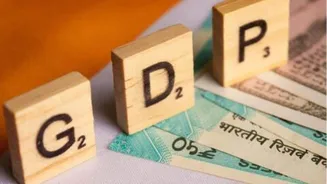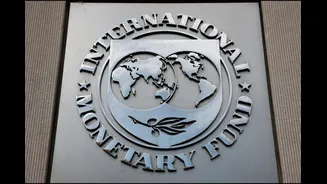GST 2.0: A Catalyst
The Goods and Services Tax (GST) 2.0 is proving to be a significant driving force behind India's economic expansion. The Finance Ministry's report indicates
that this strategic reset is set to bolster the demand outlook across various sectors. This is a positive development for the country's economy, as it signifies a potential surge in consumer activity. As demand rises, it often stimulates businesses to increase production, which ultimately leads to job creation and higher incomes. The implementation of GST 2.0 is expected to have a cascading effect, benefiting multiple facets of the Indian economy.
Soaring Consumer Demand
One of the most immediate effects of GST 2.0 has been a noticeable upswing in consumer demand. This implies that people are willing and able to spend more on goods and services. This increased spending signals growing consumer confidence, which is a positive indicator for economic health. With more individuals purchasing items, businesses get a boost, leading to more production and the requirement for increased labor. The cycle of growing demand, production, and employment results in a stronger economy. This surge is likely driven by factors such as enhanced purchasing power, improved market accessibility, and an overall sense of optimism regarding the country's financial future.
Growth Forecasts
Economic forecasts are projecting positive growth trends, driven by the GST 2.0's impact. These forecasts suggest that the Indian economy is poised for continued expansion. Experts analyze market data and economic indicators to make these projections, taking into account factors like consumer spending, investment, and government policies. As demand surges, various sectors are anticipated to flourish, increasing production levels and contributing to a more robust gross domestic product (GDP). Investors often monitor these forecasts to assess the potential for return on investment, which can further fuel economic expansion. These optimistic projections give confidence to the markets.
Ministry's Report
The Finance Ministry's report on the GST reset provides a comprehensive analysis of the prevailing economic conditions and future prospects. It offers insights into the key factors driving economic growth and the anticipated effects of the GST 2.0 implementation. This report highlights specific areas where the GST reset is expected to boost demand. These reports are essential for policymakers, business leaders, and investors, providing them with the necessary information to make informed decisions. Analyzing the Finance Ministry's report provides an in-depth understanding of the dynamics at play in the Indian economy and the various factors contributing to its growth trajectory.
Boosting Demand Outlook
The GST reset is specifically designed to improve the demand outlook, promising advantages for numerous industries. By modifying tax regulations and streamlining procedures, the GST 2.0 is aimed at enhancing consumer spending. By making it simpler for businesses to function and by increasing disposable income for consumers, the government hopes to trigger a rise in overall economic activity. When demand outlooks are positive, businesses are more likely to expand their operations, create more jobs, and make investments. This creates a cycle of growth that benefits both businesses and consumers. Thus, the GST reset plays a vital part in fostering a dynamic and flourishing economy.














